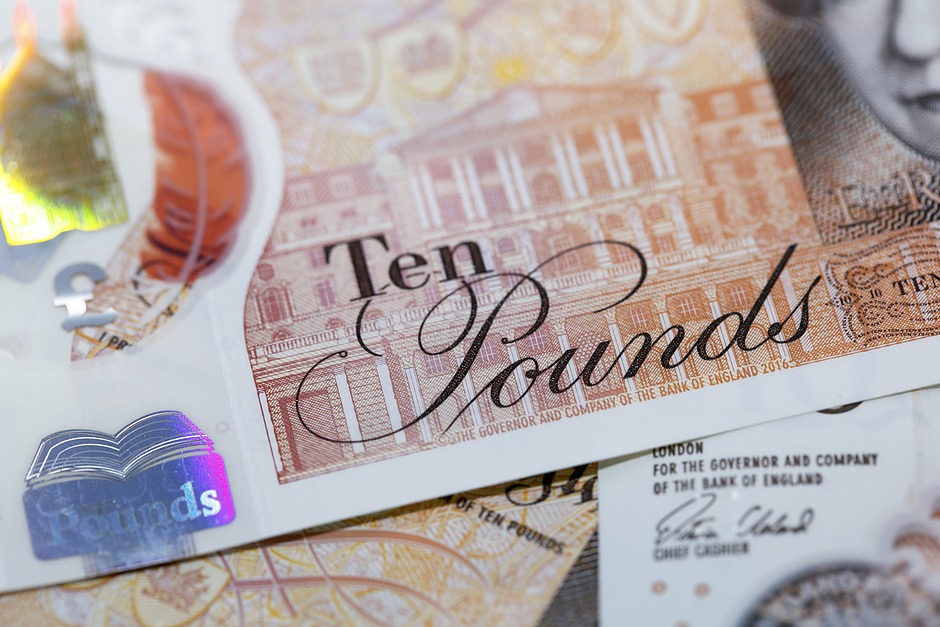GBP/JPY slides further below 195.00, away from its highest level since late July set on Friday
- GBP/JPY drifts lower for the second straight day amid modest JPY strength.
- Bets for faster BoE rate cuts undermine the GBP and weigh on the cross.
- The BoJ uncertainty might cap the JPY and help limit losses for spot prices.

The GBP/JPY cross kicks off the new week on a weaker tone and retreats further from its highest level since late July, around the 196.00 mark touched on Friday. Spot prices, however, remain confined in a familiar range held over the past two weeks or so and currently trade around the 194.70 region, down just over 0.20% for the day.
The Japanese Yen (JPY) continues with its relative outperformance for the second straight day amid renewed intervention fears, which, in turn, is seen as a key factor weighing on the GBP/JPY cross. In fact, Japan's top currency diplomat, Atsushi Mimura, warned against speculative trading and said on Friday that authorities are watching FX moves with a high sense of urgency. Adding to this, Japan's Deputy Chief Cabinet Secretary Kazuhiko Aoki noted that it is important for currencies to move in a stable manner reflecting economic fundamentals.
Meanwhile, a surprise fall in the UK Consumer Price Index (CPI) to the lowest level since April 2021 and below the Bank of England's (BoE) 2% target lifted bets for a 25 basis point (bps) interest rate cut at the November 7 meeting. Moreover, the money markets are pricing in the possibility of another BoE rate cut in December, which acts as a headwind for the British Pound (GBP) and exerts additional pressure on the GBP/JPY cross lower. That said, the uncertainty about the Bank of Japan's (BoJ) rate-hike plans should cap the JPY and offer support to the cross.
BoJ Governor Kazuo Ueda said on Friday that the central bank must focus on the economic impact of unstable markets and risks from overseas. This comes on top of Japanese Prime Minister Shigeru Ishiba's surprise opposition to additional rate hikes and suggests the BoJ was in no rush to tighten its policy further ahead of the general election on October 27. Apart from this, the risk-on mood should cap the safe-haven JPY and limit losses for the GBP/JPY cross, warranting caution before placing aggressive bearish bets in the absence of any relevant macro data.
BoE FAQs
The Bank of England (BoE) decides monetary policy for the United Kingdom. Its primary goal is to achieve ‘price stability’, or a steady inflation rate of 2%. Its tool for achieving this is via the adjustment of base lending rates. The BoE sets the rate at which it lends to commercial banks and banks lend to each other, determining the level of interest rates in the economy overall. This also impacts the value of the Pound Sterling (GBP).
When inflation is above the Bank of England’s target it responds by raising interest rates, making it more expensive for people and businesses to access credit. This is positive for the Pound Sterling because higher interest rates make the UK a more attractive place for global investors to park their money. When inflation falls below target, it is a sign economic growth is slowing, and the BoE will consider lowering interest rates to cheapen credit in the hope businesses will borrow to invest in growth-generating projects – a negative for the Pound Sterling.
In extreme situations, the Bank of England can enact a policy called Quantitative Easing (QE). QE is the process by which the BoE substantially increases the flow of credit in a stuck financial system. QE is a last resort policy when lowering interest rates will not achieve the necessary result. The process of QE involves the BoE printing money to buy assets – usually government or AAA-rated corporate bonds – from banks and other financial institutions. QE usually results in a weaker Pound Sterling.
Quantitative tightening (QT) is the reverse of QE, enacted when the economy is strengthening and inflation starts rising. Whilst in QE the Bank of England (BoE) purchases government and corporate bonds from financial institutions to encourage them to lend; in QT, the BoE stops buying more bonds, and stops reinvesting the principal maturing on the bonds it already holds. It is usually positive for the Pound Sterling.
Author

Haresh Menghani
FXStreet
Haresh Menghani is a detail-oriented professional with 10+ years of extensive experience in analysing the global financial markets.

















